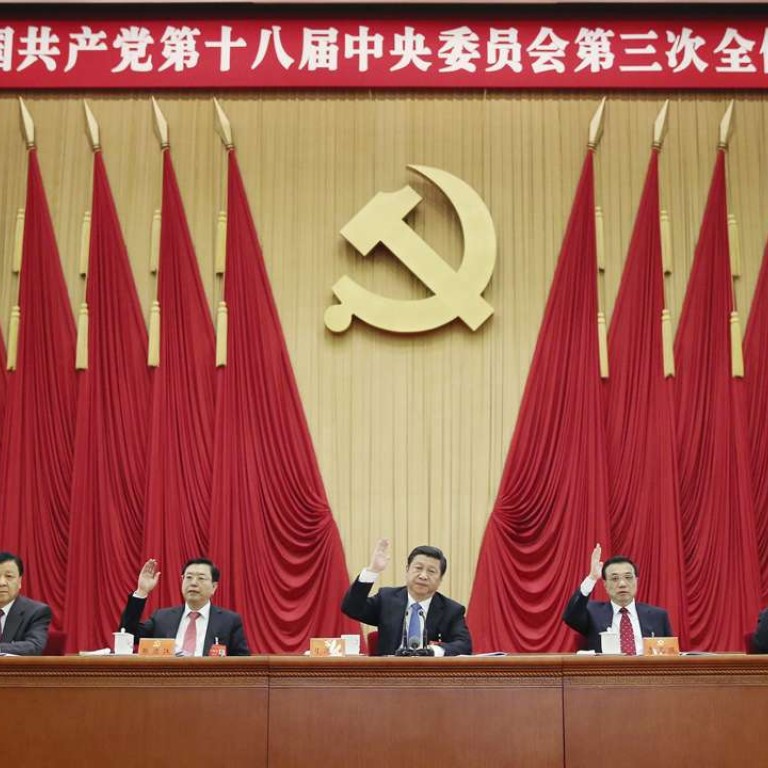
If it’s China’s Politburo Standing Committee’s decision, then it’s usually final
Hong Kong Chief Executive candidate Carrie Lam Cheng Yuet-ngor reportedly has the backing of the body, which makes the nation’s most important decisions
The ruling Chinese Communist Party’s Politburo Standing Committee decided at a meeting on December 25 to back Carrie Lam Cheng Yuet-ngor in the Hong Kong chief executive election, the South China Morning Post reported on Wednesday.
A source told the Post the information was obtained at the meeting between Zhang Dejiang, chairman of the National People’s Congress and Politburo Standing Committee member, and a select number of Hong Kong elite in Shenzhen on Sunday and Monday.
Following the principle that “the smaller the meeting, the more important the meetings are”, gatherings involving China’s seven-strong standing committee often discuss the country’s most important secrets.
Here we take a look at the workings of the standing committee:
1. How are decisions made?
The internal decision-making process is unclear, but a general principle is that every member of the standing committee has one equal vote in a “collective leadership”.
That includes the General Secretary of China’s Communist Party – currently President Xi Jinping – who also has just one vote, yet serves as “the first among equals”, being entitled to calling the meetings and setting their agenda.
It means that when an issue needs to be decided by the standing committee, only four votes from members will be enough for a “group” decision. The other three members will have to accept and abide by that decision.
As for what issues are debated, that remains unclear.
During the era of former Chinese President Hu Jintao, the standing committee was made up of nine members.
Hu Angang, a professor at Tsinghua University, said in mid-2012 that China’s political system was better than that of the US because China had “nine presidents” to make wise decisions.
2. How often does the standing committee meet?
According to a book by Cai Dingjian, the late constitutional law scholar, the Politburo, which now has 25 members, regularly convenes once a month, but the innermost standing committee meets on a weekly basis.
The date, debate topics and decisions of the standing committee are often closely guarded state secrets.
The Xinhua news agency will publish an edited and filtered statement after each Politburo meeting, but not for its standing committee.
3. Once it makes a decision, is it easy to change it?
No. As the standing committee works on the principle of “collective leadership”, no single member is entitled to make any decision on behalf of the committee, nor has the right to alter the collective decision made by the body, according to Cai’s book.
All members must stick to the decision made by the body, and any member should obtain the consent of the body before making remarks on behalf of the central authority.
If the rule still holds firm, than Zhang would have had the mandate and consent of the whole seven-member body before giving an internal briefing to some members of Hong Kong’s Chief Executive election committee over the weekend in Shenzhen.
4. Could there be a surprise?
The history of the Chinese Communist Party is filled with power struggles and the collective leadership of the standing committee came into existence only gradually after the death of Mao Zedong in 1976 and the retirement of Deng Xiaoping in late 1989.
Deng, though, tried to institutionalise the group decision-making mechanism of the party in the early 1980s to avoid Mao’s one-man dictatorship. However, there were still bumps along the way.
Zhao Ziyang, the late reformist icon of the party, who became premier in 1980 and the party’s general secretary in 1987, was purged in 1989 after the failed Tiananmen Square democracy movement and spent the rest of his life in virtual house arrest. He died in 2005.

